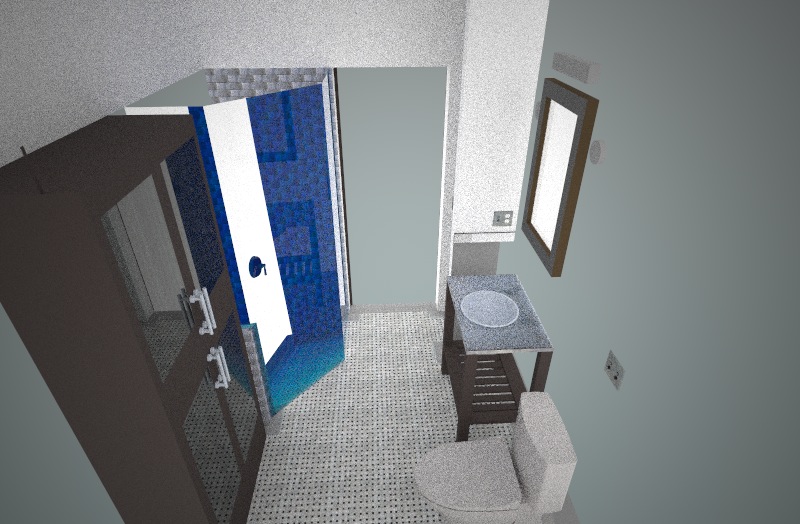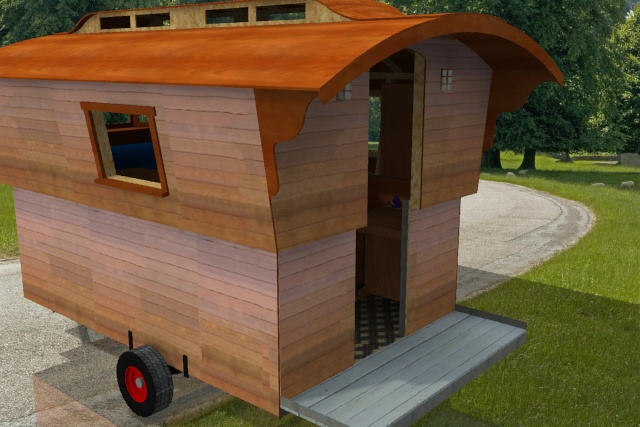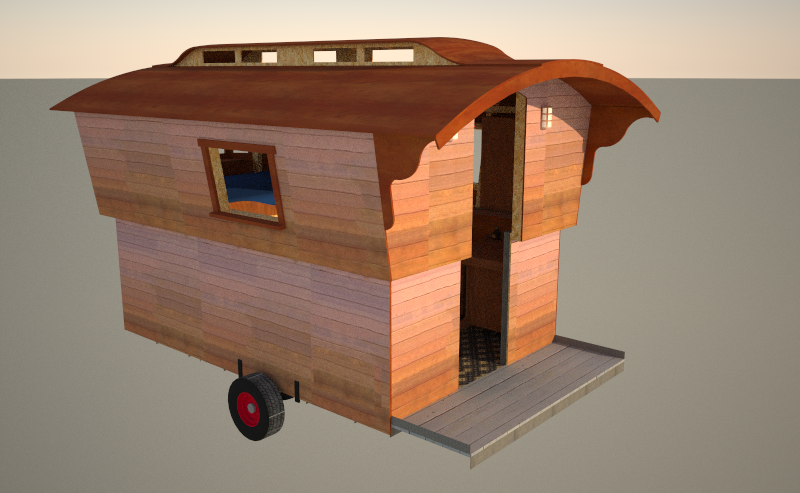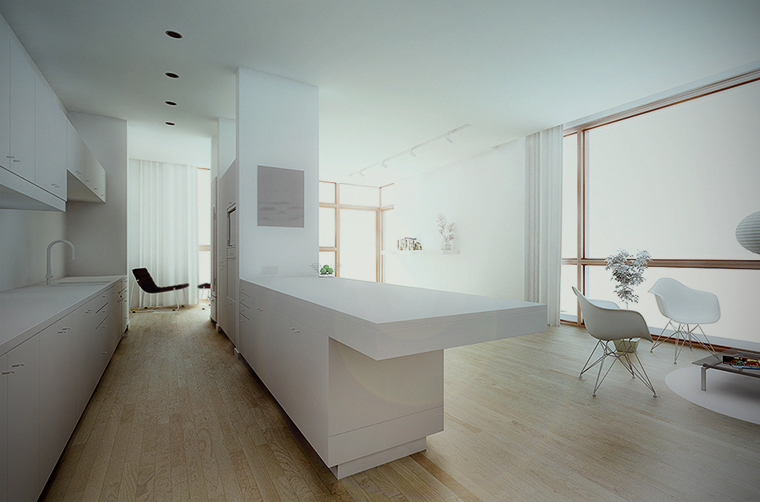Maxwell vs IDX Renditioner
-
Hi all; trying to choose between the pro versions of these two. I was wondering what people's opinions might be.
My observations so far. Please let me know if I have any of this wrong:
Maxwell:
Even pro version limited to 1920x1280 (why limit it at all?)
All material definitions must be first downloaded from the resources site. Materials may include bump maps. Materials may also be created from texture images.
Clumsy UI, but much more powerfulIDX Renditioner:
$99 version limited to 1MP
$200 version limited to 16MP
Materials chosen from a few dozen built-in materials or created directly from SU materials and then properties such as shininess adjusted.
Material properties set by dragging onto object in preview screen.
Bump maps may be derived from the texture. You can also specify a bump map from an image, but I'm not sure where you're supposed to get it. It can be very hard to apply a material property to a small object when working with the very small preview window. I haven't figure out yet how to edit the properties of an individual light source.Currently, I'm leaning hard towards Maxwell. Opinions?
-
Oh, one more thing. As I play with the free version of Maxwell, the output is extremely grainy. I see that same graininess in the instructional videos. How do I fix that?

-
You're going wrong with that.
I have no clue about IDX.
But for Maxwell you should take a look at the Settings. You have predefined Materials. No need to use MXM Materials from the Resource side only.
You have an inbuild Material Editor, too.
Take a look at all these settings and the manual first.
About grainy renders:
You have a small limitation in the free Version ( Draft Mode) Buy the small license and it will be better.( Production Mode)
Second is you can set the samples in the Fire Window Preferences. Higher means less noisy.
And at least, Maxwell is unbiased. That means it took longer than biased engines.
No direct comparsion between both.Here are some more threads about Renderer, including "Maxwell versus Twilight" some threads below. Take a look there first to learn more about opinions.
Burkhard
-
Thanks; I did read the Maxwell vs Twilight so that was helpful.
-
I have to say though; they both produced beautiful results with my test model and the default settings.


-
I've used both and I started with IDX Renditioner -- it is a nice simple program with a pretty low learning curve that can produce nice results if you are not looking for absolute Photo-realism.
Maxwell currently has 3 tiers:
Free (stand alone) - limited to 800 pixels for free
"Pro" (stand alone) - Limited to 1920 pixels for $95
Maxwell Render Suite - No limits for $995I consider Maxwell the premier render engine if you want absolute photo-realism -- but this comes with a few caveats.
The first thing that must be said is Maxwell will only give it's best results if you feed it high-quality Geometry -- everything must be modeled as it is the "real world" to get correct results (both in scale and details).
The stand-alone plugin is still a work in progress and as such is somewhat more limited on the material side of things than the full Maxwell Render Suite. However there is still quite a bit that can be accomplished by just using the "embedded/character" material types... and you do have the option to download the demo for the full Maxwell Render Suite to get access to MXED and thereby design materials that take full advantage of all Maxwell can do.
If you have the patience to master it Maxwell is hard to top IMO.
Best,
Jason. -
@falk said:
Oh, one more thing. As I play with the free version of Maxwell, the output is extremely grainy. I see that same graininess in the instructional videos. How do I fix that?
There are a number of things here that can impact the quality of output -- take the blue door for instance, glass (dielectric) materials must be applied to solid geometry (as in a SketchUp solid) for accurate effects. Applying glass to a single polygon will give the error you see in your picture... this is part of what I meant when I said everything must be modeled as it is in the "real world" in order for Maxwell to give accurate results.
The draft render engine is really not appropriate for indoor scenes (although with skill you can pull it off) -- and I would say the production render engine is going to outperform the draft engine for interiors pretty much every time(as far as noise/speed).
Best,
Jason. -
Why are you limiting yourself to Maxwell and Renditioner? There's a whole gamma of rendering apps out there - try as many as you can, until you find the one that fits your needs, budget and skills.
If you're fairly new to rendering, I'd suggest you start out with a free app, like Kerkythea. Pretty powerful, lots of resources, including a few concise, easy-to-follow tutorials. Or try Podium. Not free, but not overly expensive either ($198) - and very easy to use. If you don't need the amount of control an app like Vray offers you, I'd say Podium is a decent choice. Don't take my word for it, though (!) - what works for me may not work for you, so try the demo.
(postprocessed) Podium render (WIP!):

-
ANY render solution in the right hands can produce great results as well as ANY "great' render solution in a novice or untalented users hand will achieve elementary or unflattering results.
Practice makes perfect as my mum always said.
You cannot compare render software unless you can compare render users in the same way.
And especially never compare an unbiased render solution with a biased one, it's like comparing apples and oranges, sure they both are fruit but that's the only common denominator.
-
@unknownuser said:
Why are you limiting yourself to Maxwell and Renditioner? There's a whole gamma of rendering apps out there - try as many as you can, until you find the one that fits your needs, budget and skills.
Unfortunately, I'm on a Mac. Normally, that's a good thing, but there are precious few renderers that run on it.
-
@solo said:
My Website:
OK, I'm impressed. As in my jaw drops. Wow, I had no idea what Sketchup and a good renderer could do.
-
@falk said:
Unfortunately, I'm on a Mac. ...
Hmmm; but I see Kerkythea runs on Mac. I think I'll try that next.
-
Good choice. I'd stick with it for a while, and learn as much as I can. Kim's excellent "Getting Started" tutorial should get you, er, started.
Have fun!
-
Also worth seeing if you want other examples of what SketchUp can do when rendering is here:
I always say that solid post-production skills are almost as valuable as fully knowing your engine -- since good post techniques can elevate just about any render.
Whichever way you go I would definitely stick with one of the free render options until you have a good idea of what you really need and want.
Best,
Jason. -
@jason_maranto said:
Whichever way you go I would definitely stick with one of the free render options until you have a good idea of what you really need and want.
Listen to the man.
 Or you might end up spending lots of money on an app which, a couple of months down the road, turns out to be a bad choice for you.
Or you might end up spending lots of money on an app which, a couple of months down the road, turns out to be a bad choice for you.Trust me.


-
Oh, just double-checking -- "Kerkythea 2008 Echo" is the latest version, right?
-
That's right. Kerkythea Echo 2008 is officially the latest version.
There is also Kerkythea Boost version which is still under development.
You can get the Boost version in the forum if you'd like to try the dev version. -
echo boost is still windows only last time I checked.
@ Falk are still using SU 6 or have you not updated your profile, just wondering
-
@mwm5053 said:
echo boost is still windows only last time I checked.
@ Falk are still using SU 6 or have you not updated your profile, just wondering
SU 8 now. Never bothered to update my profile.
Advertisement







